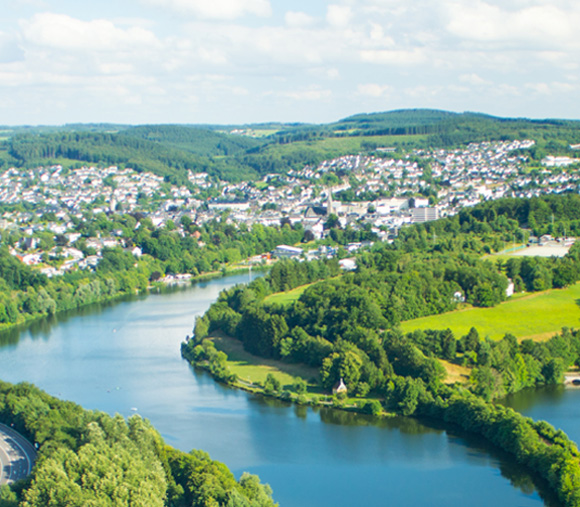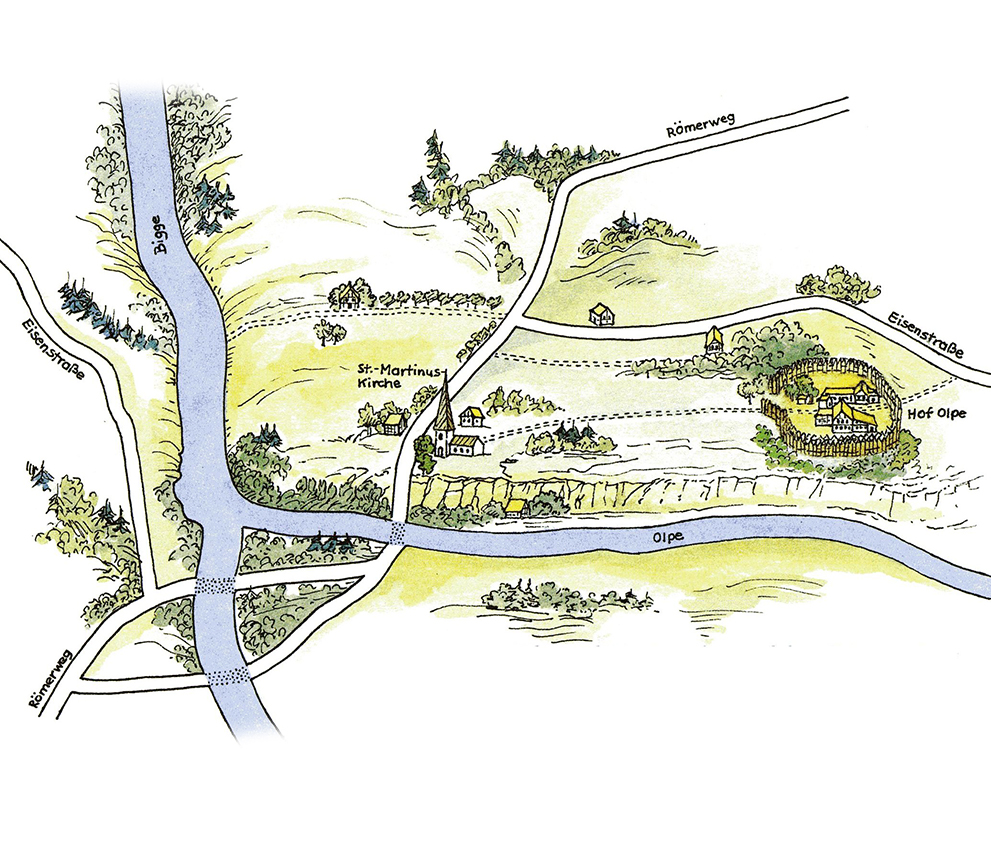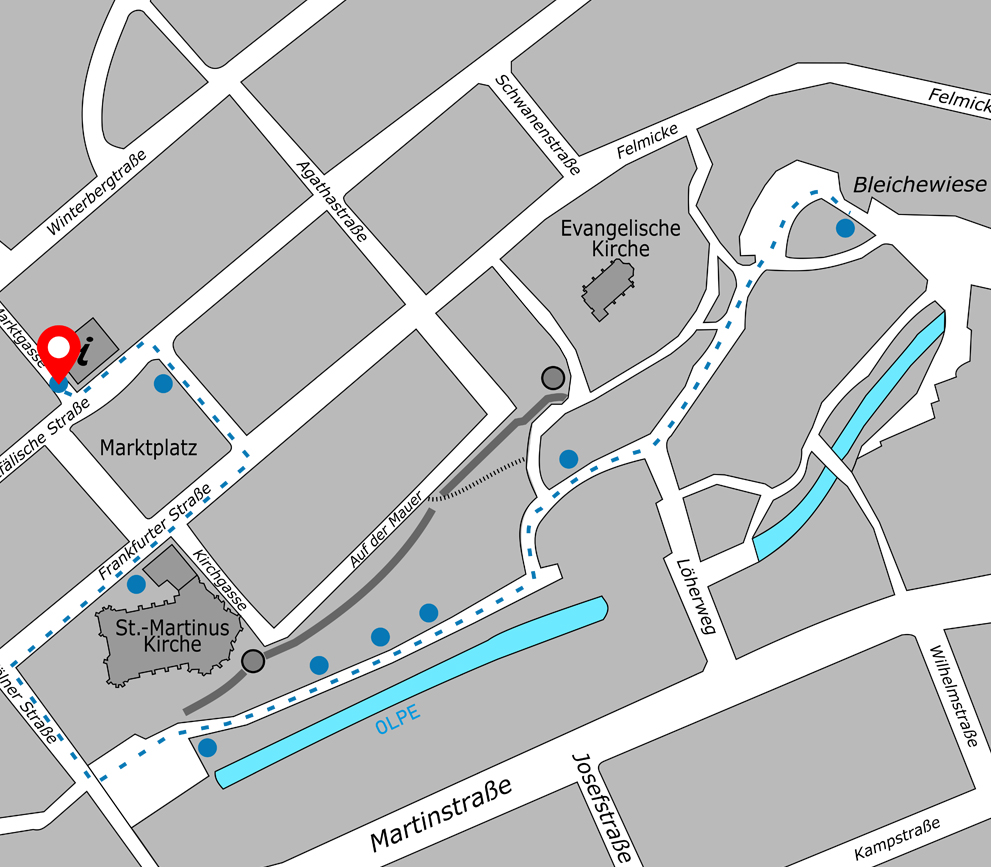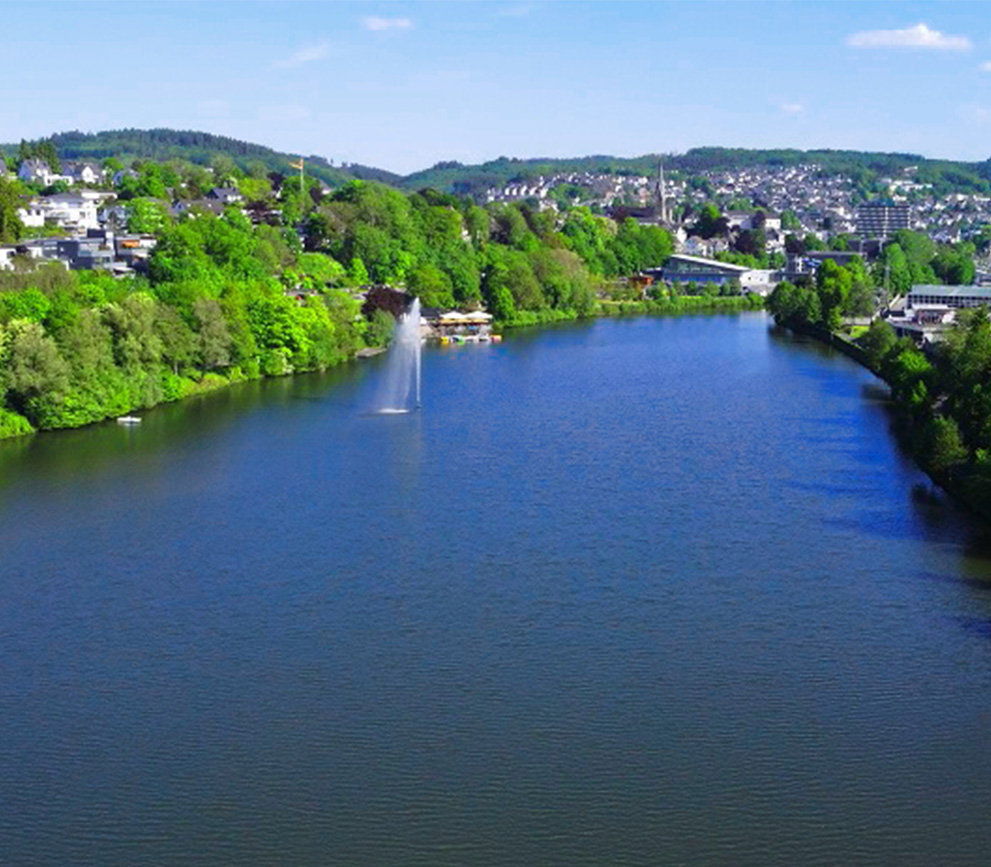
- Audio-Führung
starten - Hörspiel
für Kinder - Audio-
Führung für
Sehgeschädigte
1Tourist information
Welcome to Olpe, known as the “Town of a Thousand Lime Trees”, the “Town of the Pannenklöpper” (tinsmiths) and the “Town on the Lake”. These are all monikers for the town, which can trace its origins back to over 1,200 years ago when, during the Frankish period, a church dedicated to Saint Martin was built in the main courtyard of a royal residence perched on a hill. The Olpe, a stream that flows below, gave its name to the area where the residence was located and to the parish, village, town and district of Olpe that followed.
A village gradually grew up around the church because of its well-placed location at the intersection of the “Roman Road” and the “Iron Road”. The village was granted a town charter by the Archbishop of Cologne, Count Heinrich II of Virneburg in 1311. The purpose behind its foundation as a town was to establish a fortified base against neighbouring independent rulers and to secure the mines in the nearby Rhonard region. The mining and processing of various ores, notably copper, would subsequently bring prosperity to the town. In addition to metalworking, other important industries included tanneries and charburning.
A major fire on 28 April 1795 almost destroyed the entire town centre. Within a few years, Olpe was rebuilt according to a completely new master plan.
In 1802/03 Olpe – which had been governed by the Electorate of Cologne since the 13th century – passed to the Landgrave and later Grand Duke of Hesse-Darmstadt, only to be transferred to the Kingdom of Prussia in 1816. Since then, it has been part of the administrative district of Arnsberg. In 1819, the town, which was rebuilt according to a “modern” master plan following the huge blaze, became a “district seat”.
Olpe underwent an economic boom after it was connected to the railway network in 1875, which was also reflected in its urban planning and development.
Nowadays, the Biggesee, which directly abuts Olpe’s town centre, is of major importance for recreation and tourism. When the Biggesee reservoir was completed in 1965, it marked the end of what was then Europe’s largest construction project.
If you would like to find out more about Olpe, for instance, the significance of its one thousand lime trees, what a “Pannenklöpper” is, and the festivals that are held here, then follow the audio columns that are located throughout the town centre or book a guided tour here at the Tourist Information Office. The town archive or Stadtarchiv, located in the Altes Lyzeum, is another point of contact and information in the town if you would like to know more about Olpe’s history. It also houses the town’s written records.
Overview of points of interest





